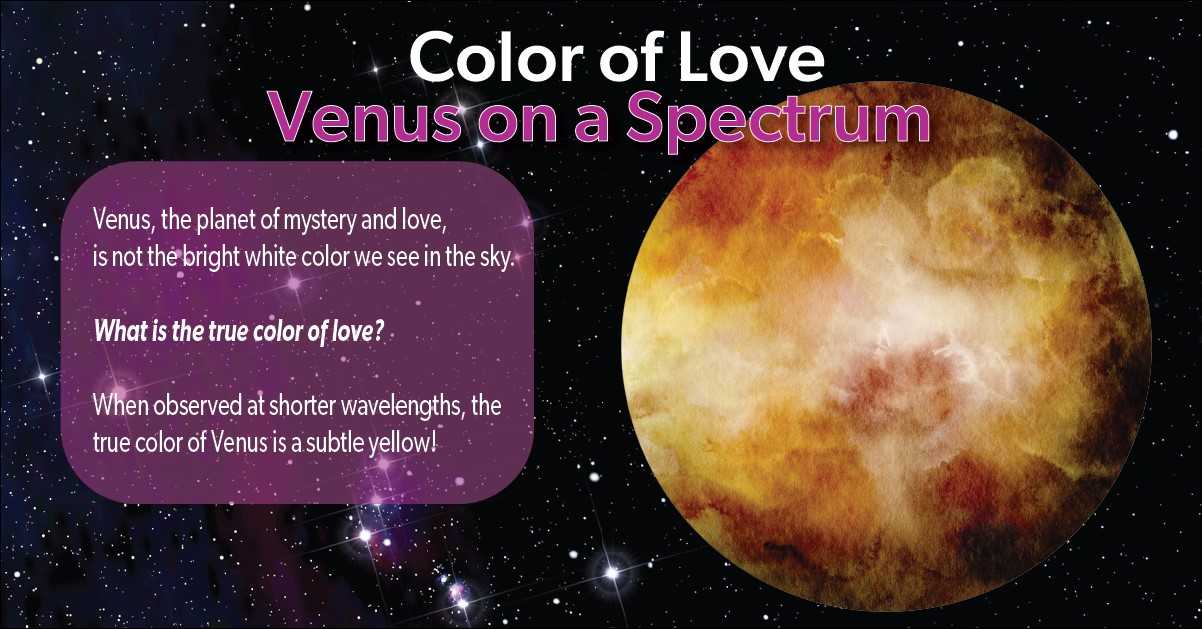
To the human eye, Venus appears as white but it’s true colors are actually eclipsed by the Sun’s light. If you use a far ultraviolet camera/spectrograph, you can capture the true color of the mysterious planet. Some hypothesize that some sulfur dioxide polymers cause UV absorption, contributing to the light yellow tint.
Venus is a planet in our solar system that is often referred to as Earth’s sister planet because of their similar size and composition. Venus has a thick atmosphere composed mostly of carbon dioxide, which causes its surface temperature to be extremely hot.
Venus appears as a bright, yellowish-white object in the sky, and its color is due to the reflection of sunlight off its thick clouds of sulfuric acid. Spectroscopy can be used to analyze the light that is emitted, absorbed, or reflected by a planet or other object. By analyzing the spectrum of light that is reflected by Venus, scientists can determine the composition of its atmosphere and surface.
Using spectroscopy, scientists have been able to identify the presence of various gases in Venus’ atmosphere, such as carbon dioxide, nitrogen, and sulfur dioxide. They have also detected the presence of certain chemicals on its surface, such as iron and magnesium.
Moreover, the color of the love planet Venus appears yellowish-white due to the reflection of sunlight off its thick clouds of sulfuric acid and sulfur dioxide.





